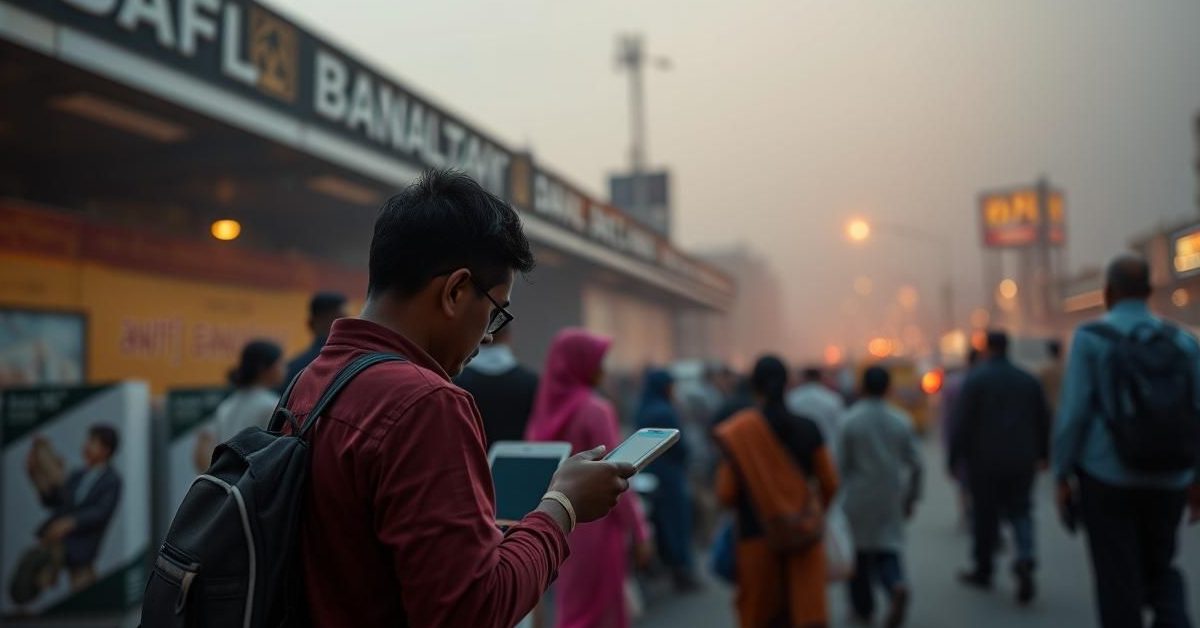India is making significant strides in financial inclusion, with the Reserve Bank of India’s (RBI) Financial Inclusion Index (FI-Index) showing continued improvement across the country.
India’s Financial Inclusion Index Continues to Rise
According to the latest data from the Reserve Bank of India, the nation’s Financial Inclusion Index reached 67 in March 2025. This marks a notable increase from 64.2 recorded in March 2024.
The RBI highlighted that this improvement reflects a deeper level of financial inclusion. This progress is largely attributed to increased usage of financial services and ongoing financial literacy initiatives nationwide.
Understanding the RBI’s Financial Inclusion Index (FI-Index)
The FI-Index is a comprehensive tool designed to measure the extent of financial inclusion in India. It considers various aspects of the financial system, including banking, investments, insurance, postal services, and the pension sector.
A unique aspect of this index is its “quality” parameter. This component assesses critical factors such as financial literacy, consumer protection measures, and any existing inequalities or deficiencies in service delivery.
The index provides a single value ranging from 0 to 100, where 0 signifies complete financial exclusion and 100 represents full financial inclusion. This allows for a clear, quantifiable measure of progress.
The FI-Index is structured around three main parameters: Access, Usage, and Quality. Access holds a 35 percent weight, Usage is given the highest weight at 45 percent, and Quality accounts for 20 percent. Each parameter is calculated based on multiple underlying indicators.
Notably, the FI-Index does not use a base year. Instead, it captures the cumulative impact of efforts made by all stakeholders over time. It is published annually in July.
Government Initiatives Driving Financial Inclusion
Financial inclusion has long been a crucial policy objective for governments globally, aiming to reduce inequalities and empower individuals at all economic levels. India has launched several flagship initiatives to achieve this goal.
Pradhan Mantri Jan Dhan Yojana (PMJDY)
Launched in August 2014, PMJDY aimed to provide universal access to essential financial services. This includes basic savings accounts, remittance facilities, credit, insurance, and pensions, all offered affordably.
Key features of PMJDY accounts include no opening or maintenance charges, no minimum balance requirements, a free RuPay debit card with Rs 2 lakh accident insurance, and access to an overdraft facility of up to Rs 10,000. These accounts are also pivotal for Direct Benefit Transfers (DBT) and for accessing schemes like PMJJBY, PMSBY, APY, and MUDRA.
Digital India
The Digital India program, launched in July 2015, seeks to transform India into a digitally empowered society and a knowledge economy. It encompasses various initiatives designed to bring good governance to citizens through digital means.
Examples include the Bharat Interface for Money (BHIM) App for digital payments, the Goods and Services Tax Network (GSTN), and platforms like Aarogya Setu and Open Network for Digital Commerce (ONDC).
Social Security and Pension Schemes
The Pradhan Mantri Jeevan Jyoti Bima Yojana (PMJJBY) offers a one-year renewable life insurance cover of Rs 2 lakh for death due to any reason, available to individuals aged 18 to 50 with a bank account.
Similarly, the Pradhan Mantri Suraksha Bima Yojana (PMSBY) is a one-year personal accident insurance scheme, also renewable annually, providing coverage for death or disability due to an accident for those aged 18 to 70 with a bank account.
The Atal Pension Yojana (APY), launched in 2015, targets workers in the unorganised sector. It encourages voluntary savings for retirement, assuring subscribers a fixed minimum monthly pension between Rs 1,000 and Rs 5,000 upon reaching 60 years of age, depending on their contributions. The scheme is open to individuals aged 18 to 40.
Aadhaar and the JAM Trinity
The “JAM trinity” – Jan Dhan, Aadhaar, and Mobile – has been fundamental to expanding direct benefit transfers and financial access. India’s unique biometric identification system, Aadhaar, has simplified the process of opening bank accounts, thus significantly accelerating financial inclusion.
Digital Transformation: A Catalyst for Inclusion
Recent surveys underscore the impact of digital initiatives on financial inclusion. The Comprehensive Modular Survey: Telecom, 2025, released by the Ministry of Statistics and Programme Implementation, revealed a marked increase in online banking adoption in rural areas, particularly among young women.
The proportion of rural women capable of conducting online banking transactions surged to 30.0 percent in the first quarter of 2025, a significant jump from 17.1 percent in 2022-23. For rural females aged 15-24, this figure more than doubled to 51.4 percent.
While urban areas already had higher penetration, they also saw an increase, with 62.4 percent of respondents aged 15 and above engaging in online banking, up from 50.6 percent previously.
- The RBI’s Financial Inclusion Index (FI-Index) reached 67 in March 2025, indicating deeper financial inclusion.
- The FI-Index comprehensively measures access, usage, and quality of financial services across various sectors.
- Flagship government initiatives like PMJDY, Digital India, and social security schemes are key drivers of this progress.
- Digital payment adoption, particularly in rural areas and among women, is significantly boosting financial inclusion.
India’s continuous focus on expanding financial access through robust policies and digital infrastructure demonstrates a strong commitment to empowering every citizen.















